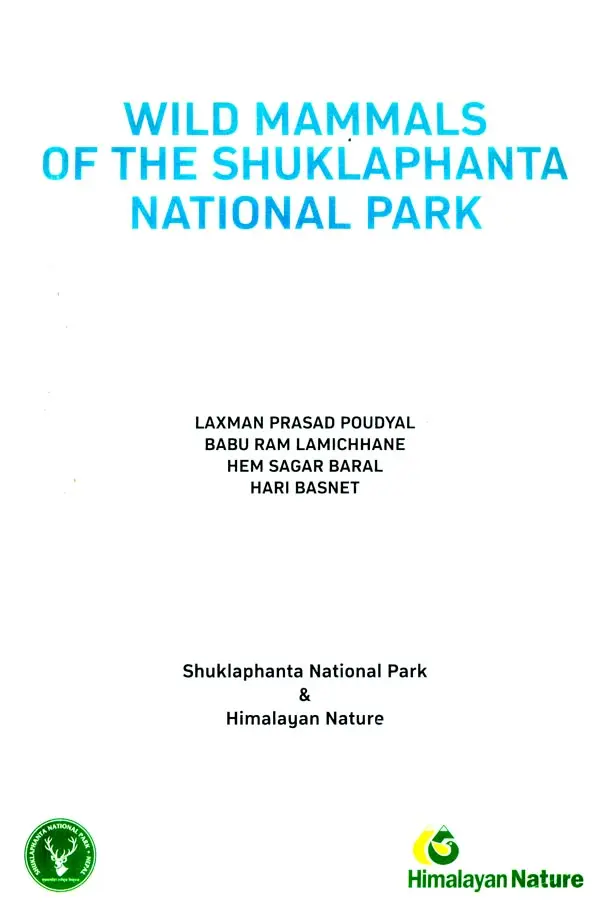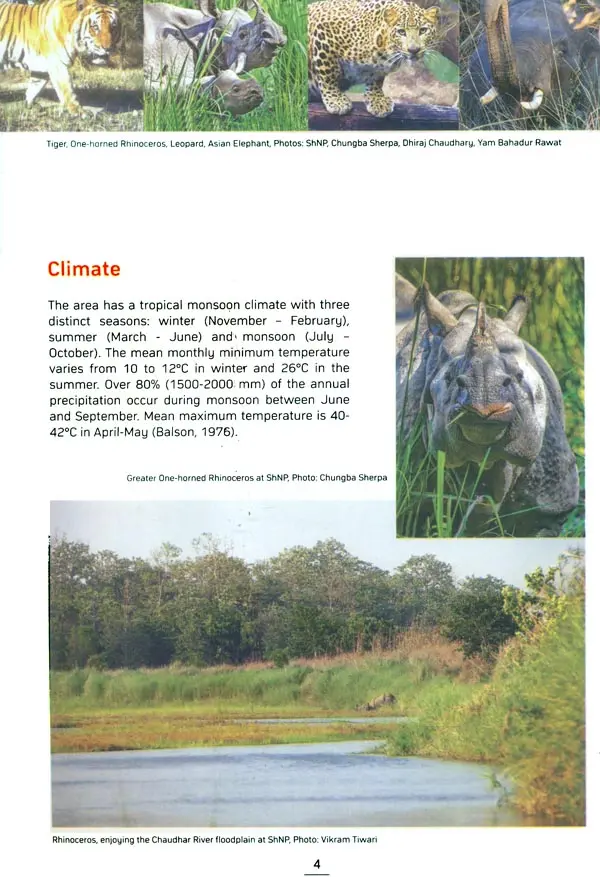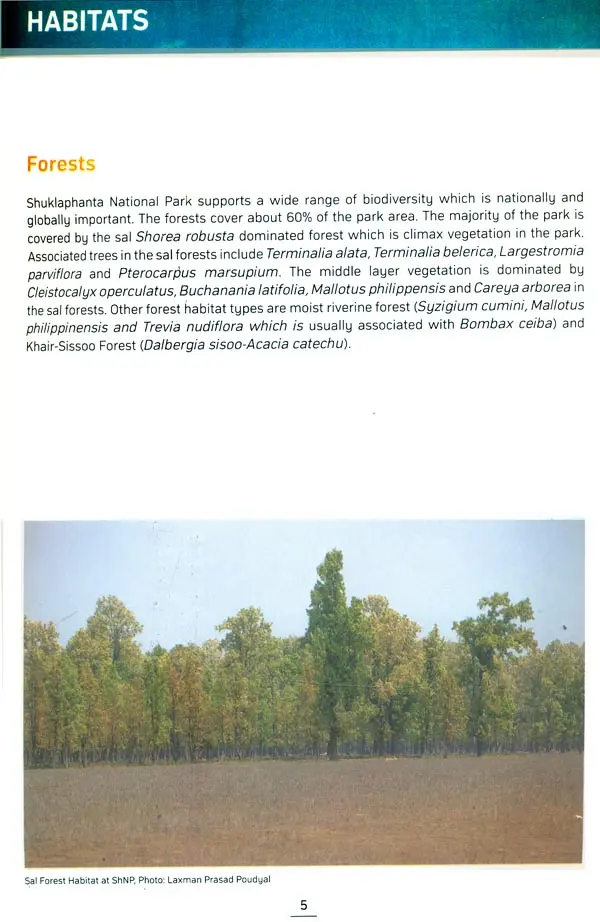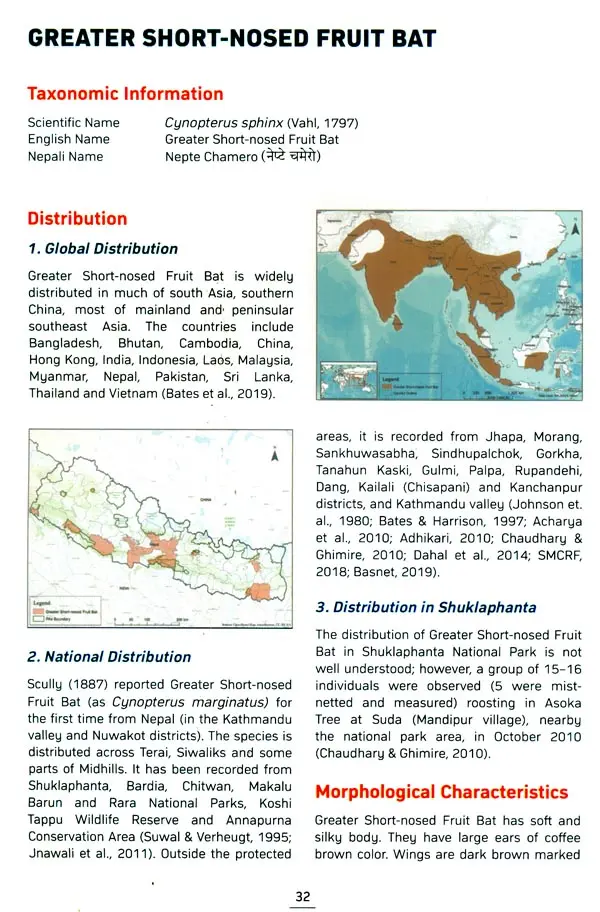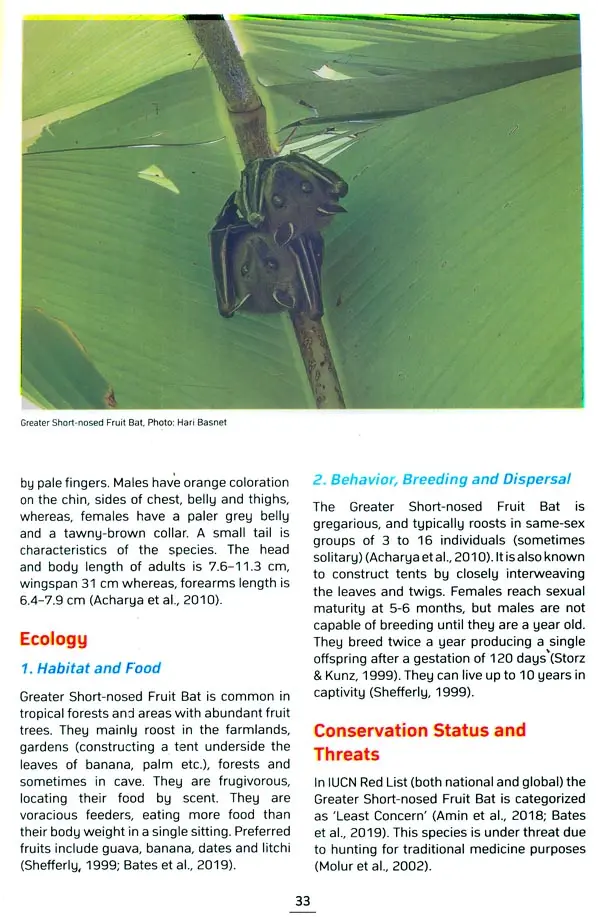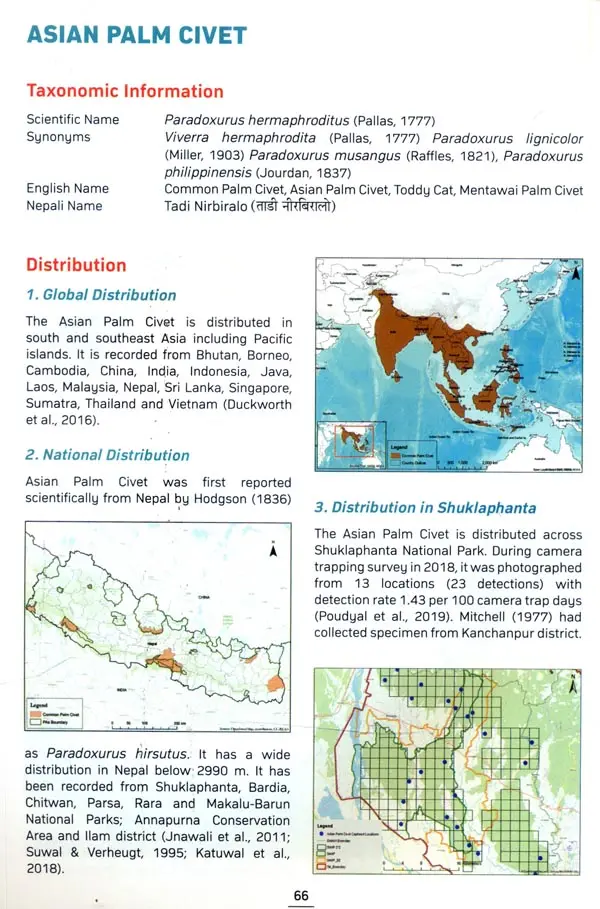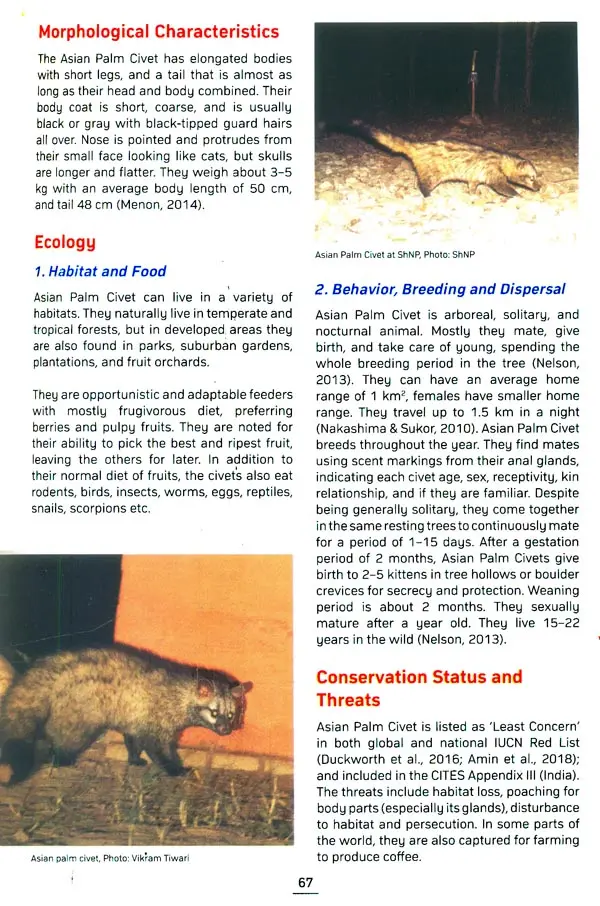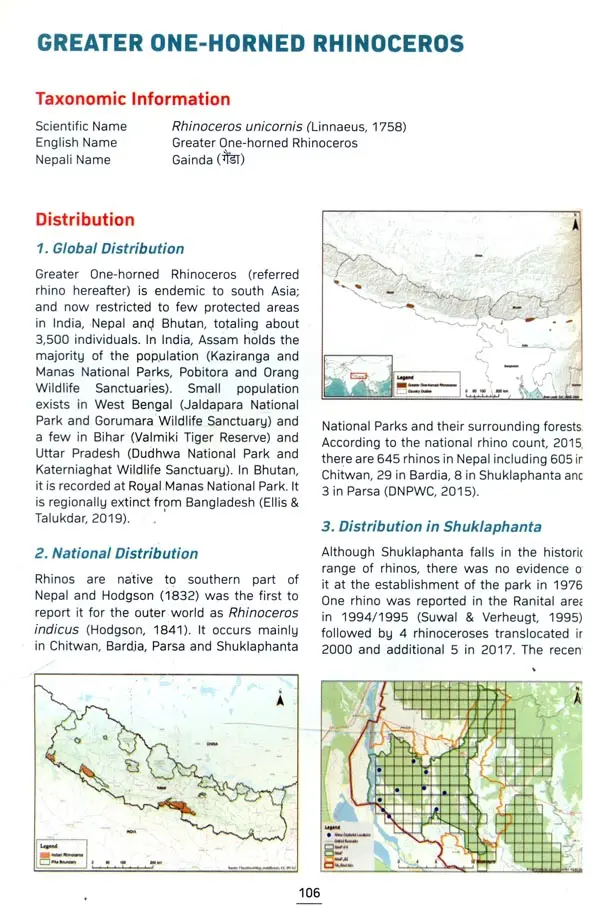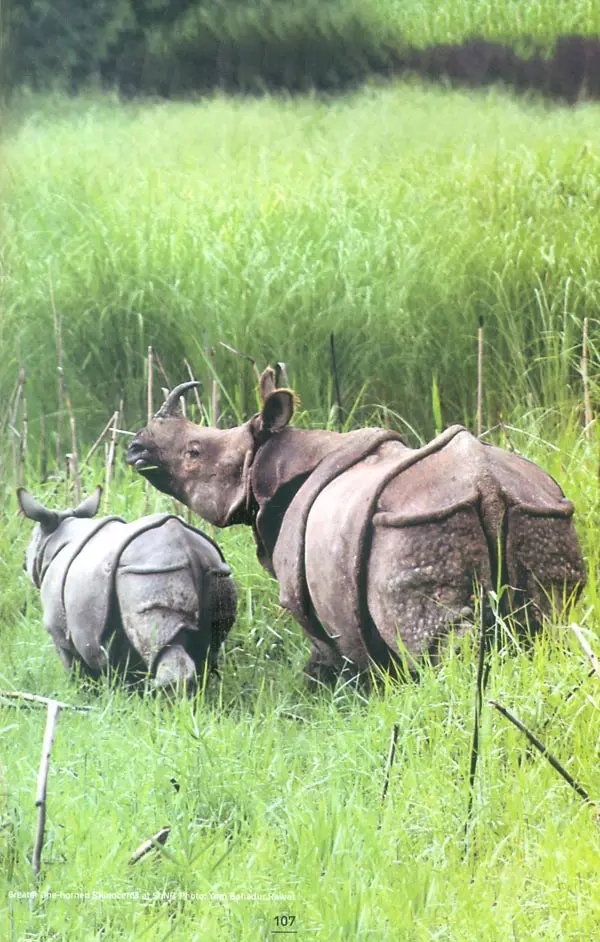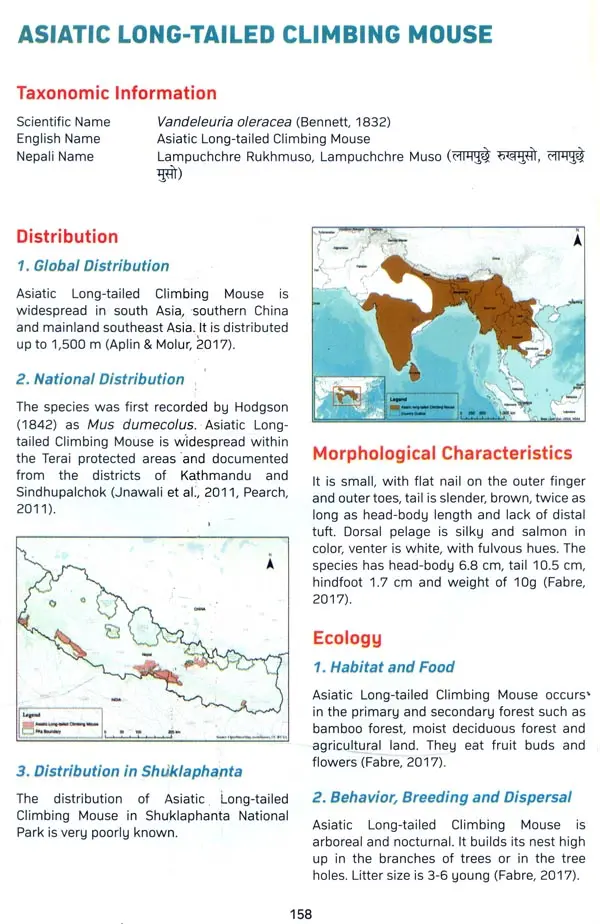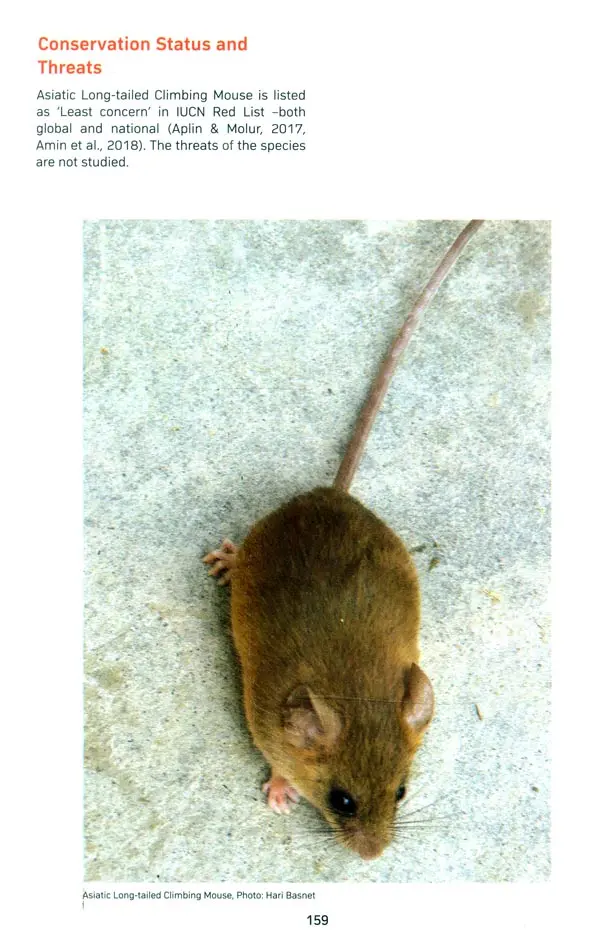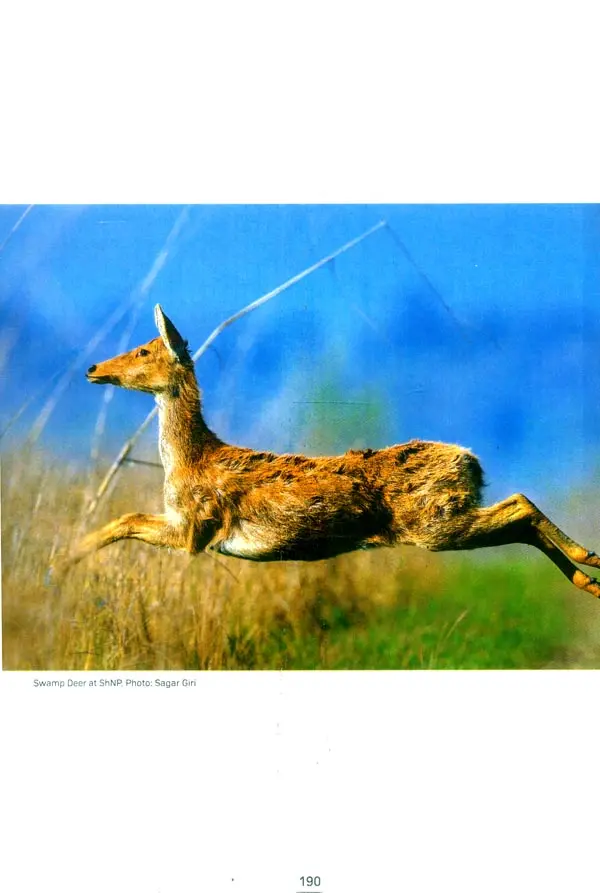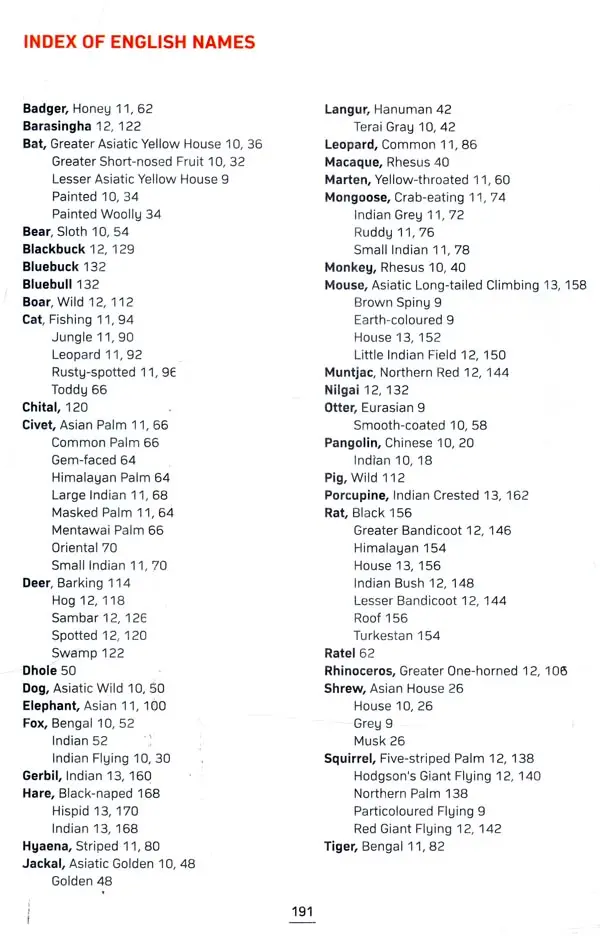
Wild Mammals of the Shuklaphanta National Park
Book Specification
| Item Code: | UAH056 |
| Author: | Various Authors |
| Publisher: | Shuklaphanta National Park Office |
| Language: | English |
| Edition: | 2020 |
| ISBN: | 9789937068659 |
| Pages: | 198 (Throughout Color Illustrations) |
| Cover: | PAPERBACK |
| Other Details | 8.50 X 5.50 inch |
| Weight | 410 gm |
Book Description
Himalayan Nature is a development and conservation research institute, working to support sustainable livelihoods of Himalayan communities and initiating practical and groundbreaking scientific research on Himalayan biodiversity, social wellbeing and the broader environment. It is a science-based organization and takes an independent view of livelihood options provided to local communities and biodiversity conservation issues. It aims to promote public appreciation of natural heritage through conservation awareness of the wider public, helping build their capacity; and foster dialogue, networking and partnership among local, national and international stakeholders for sustainable livelihoods and nature management issues at the landscape level.
The park is famous for the largest herd of Barasingha in the world. Being an ecologically diverse area, several surveys focusing on different animals were carried out in the park since its establishment in, 1976. Studies based on intensive camera trapping targeting tigers in recent decades have detected many rare wildlife, including several first records for Nepal. For instance, recent studies recorded Rusty-spotted Cat Prionailurus rubiginosus, Ruddy Mongoose Herpestes smith ii, Fishing Cat Prionailurus viverrinus, Indian Flying Fox Pteropus giganteus, Greater Short-nosed Fruit Bat Cynopterus sphinx, Greater Asiatic Yellow House Bat Scotophil us Hestia and Painted Bat Kerivoula picta in and the vicinity of the park; former two are being the first records for Nepal and remaining the first records for the park.
However, there is a lack of comprehensive understanding on the total mammalian species of SHNP and their .spatial distribution within the park. It is the first attempt to compile the mammalian speqjes recorded in the park with detailed species accounts of 56 mammalian species. We believe a detailed species account will be a great asset for the park visitors, scientific communities, naturalists as well as anyone interested in the mammalian species.
Furthermore, this initiation will provide a reference material for national park authorities for conserving the faunal diversity of the park. This will also inspire other parks to develop similar resources, which is lacking in most of the protected areas of Nepal.
The checklist was compiled using both the primary records obtained through camera traps and review of the published records of mammalian species in the park. We reviewed published books and checklists of mammals. Wild Mammals of Nepal by Baral & Shah (2008), The Status of Nepal Mammals: The National Red List Series by Jnawali et aI. (2011) and Enumeration of the Mammal of Nepal by Suwal & Verheugt (1995) were the primary references for this book.
The syst~lTl3tic description of mammals is presented according to evolutionary development.
Within species ecology, we followed the latest taxonomy for scientific and common names of species following the IUCN Red List of Threatened Category. Additionally, we have compiled the local name of each species as much as possible. Within each species account, we have provided global, national as well as distribution of species within SHNP, and prepared the global as well as national map of the species. Global range map of each species is extracted from the IUCN Red List site https://www.iucnredlist.org/ while the national map is based on the Status of Nepal Mammals: The National Red List Series by Jnawali et aI. (2011) and authors' compilation of species distribution.
We consulted many professionals as well as amateur photographers to get high quality photos.
Photos taken within, the SHNP are preferred; however a few photos taken other parts of Nepal or outside have been also used with credits to photographer. We are very much grateful to all the photographers for providing such excellent images. The photos are presented to illustrate the morphological characteristics of the species. Morphology, Ecology and Conservation Status of the species are based on published and peer reviewed literature.
Shuklaphanta National Park offered us to write the manuscript. National Trust for Nature Conservation- Biodiversity Conservation 'Center, Chitwan provided space for two workshops each lasting three days. Chitwan workshops were held for initial and final compilation and editing. We would like to thank the Department of National Parks and Wildlife Conservation, National Trust for Nature Conservation and Himalayan Nature for their constant support and encouragement.
We would like to thank Ashok Kumar Ram, Rishi Ranabhat, Sanjan Thapa, Bishnu Prasad Pandey, Dr. Naresh Subedi, Dr. Rabin Kadariya and Tulshi Laxmi Suwal for their contributions in the manuscript for some species. We have put our best efforts in giving this book a pleasant look and as much as informative. This is the property of far west Nepal. We are very much thankful to former DFO Ramesh Chand, Chair of the Hotel Association of Kanchanpur district Pramanand Bhandari, Bufferzone Committees, Bhimdutta and other peripheral municipalities, Devidal Battalion of Nepali Army, park staff and local people for their support.
We look forward to your constructive suggestions for the next edition.
Historically, the grasslands and forests of Shuklaphanta were famous hunting spots for royalties of Nepal and their distinguished guests. It was declared as Royal Hunting Forest with an area of 131 km2 in 1969 (Yadav et aI. 2000). Later it was promulgated as the Royal Shuklaphanta Wildlife Reserve in 1976 covering an area of 155 km2 and extended to the present size of 305 km2 in 1994. The area 'of 243.5 km2 surrounding the reserve was declared as buffer zone in 2004 to bring local people in conservation mainstream and support their development needs.
The Reserve's status was changed as Shuklaphanta National Park in 2017. This protected area is named after the largest grassland of lowland Nepal, the Shuklaphanta, which is home to the largest herd of the Swamp Deer Reserves duvaucela in the world.
Book's Contents and Sample Pages
